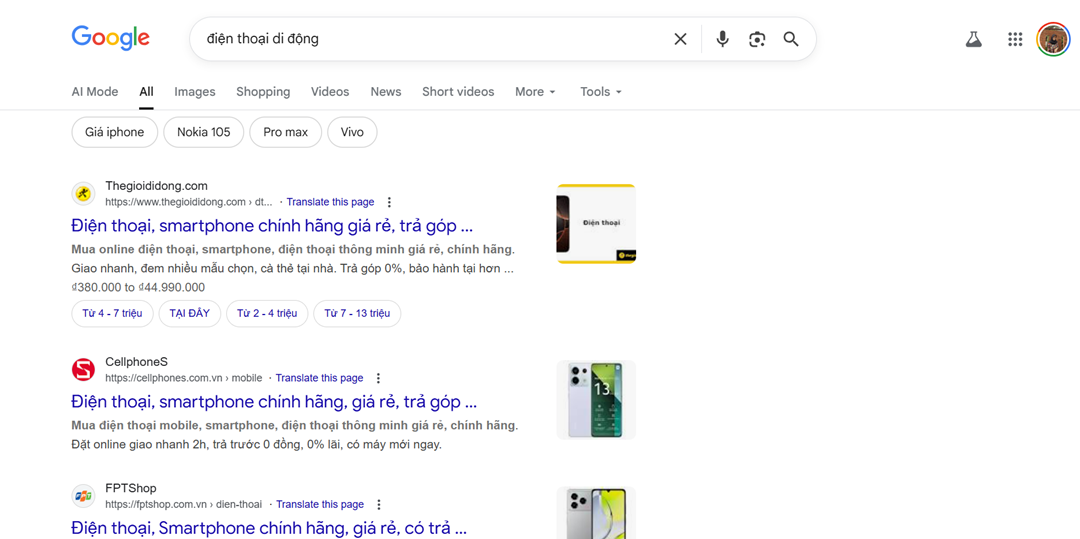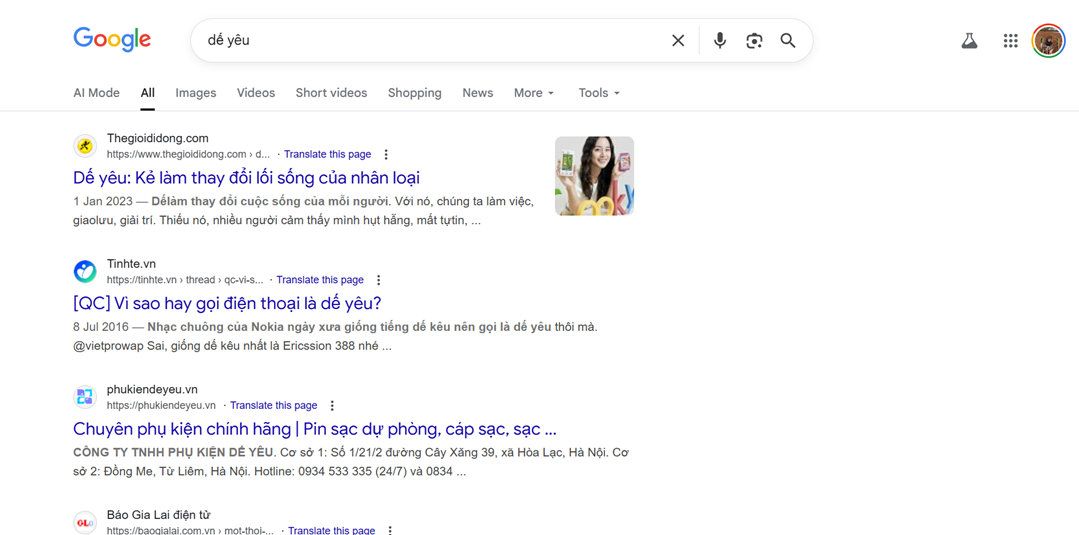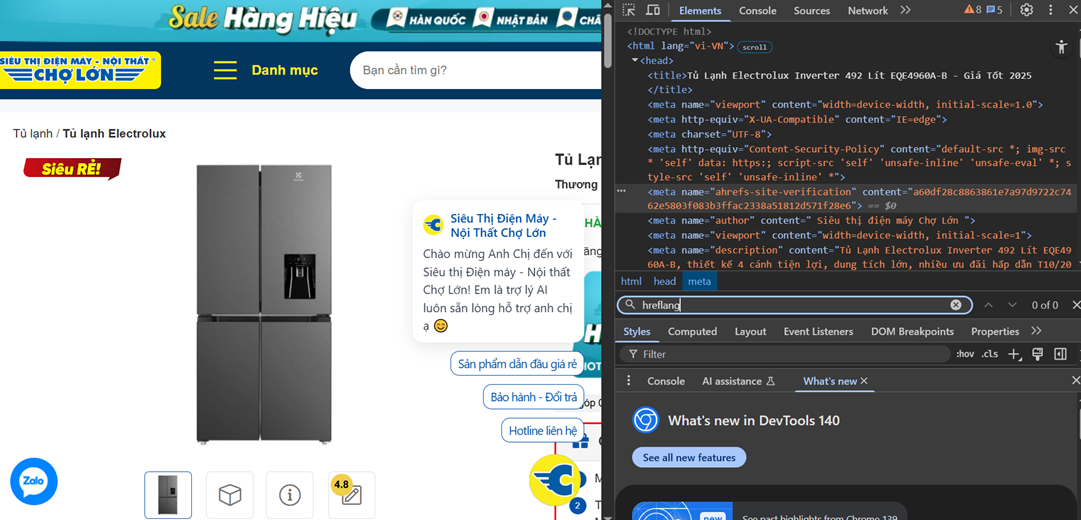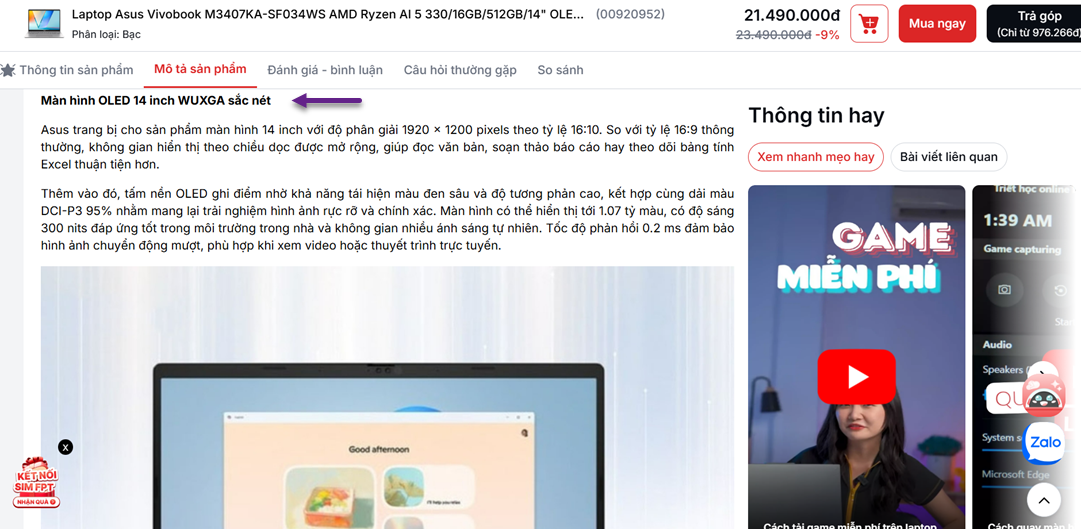Translation SEO mistakes in Vietnamese eCommerce stores often occur because many businesses only focus on translating content, without considering how the translation affects Google searches and user experience. These mistakes may seem simple, but they have a big impact, from websites being difficult to find to declining organic traffic to potential buyers losing trust.
This article will discuss the biggest translation SEO mistakes often made by online stores in Vietnam and how to fix them. These range from overly literal translations and misguided keyword selection to technical issues such as incorrect hreflang tags. By understanding and avoiding these mistakes, eCommerce brands in Vietnam can reach their local audience more easily while increasing sales conversions.
Vietnamese eCommerce market and consumer behavior

The eCommerce market in Vietnam is experiencing rapid growth, driven by high internet and smartphone penetration, a shift to digital payments, and increasing consumer confidence in online shopping. Data from Mordor Intelligence shows that the value of Vietnam’s eCommerce market in 2025 will reach USD 27.73 billion, and is projected to grow to USD 62.51 billion by 2030. Smartphones, in particular, are the main source of eCommerce revenue, with around 72% of B2C eCommerce revenue generated from mobile devices.
According to data from VnEconomy, Vietnamese consumers are now shopping online more frequently (including for daily necessities such as FMCG), using multiple platforms such as Shopee, Tiki, Lazada, and TikTok Shop.
With this rapid growth, competition in the Vietnamese eCommerce market is also becoming increasingly fierce. This makes SEO optimization, especially translation SEO, an important factor for online stores to appear in Vietnamese consumers’ search results. Without the right SEO strategy that is relevant to the local market, the potential for significant organic traffic could be lost, even though people’s shopping behavior is now increasingly dependent on online searches before making a purchase.
Top translation SEO mistakes in Vietnamese eCommerce

In Vietnam’s rapidly growing eCommerce market, translation SEO has become crucial to effectively reaching local consumers. However, many businesses still make fundamental mistakes in their translation and optimization strategies, which limit their search visibility. Understanding these common mistakes ensures brands don’t lose significant opportunities in a competitive digital market.
Literal translations without local context
Many eCommerce stores translate content literally from English into Vietnamese. This mistake happens often due to the need for speed, but Vietnamese has its own context, style, and expressions. Overly literal translations make consumers feel disconnected or even misunderstand the intended message.
As a result, brands lose emotional resonance with their local audience. SEO also suffers because Google evaluates relevance based on natural language and contextual search, not word-for-word translations.
A solution like Linguise automatic translation can help avoid this pitfall by combining machine translation with human-quality review and built-in contextual adaptation, ensuring translations sound natural and locally relevant.
Keyword mistranslations and search intent gaps

Keywords are often translated directly without considering Vietnamese users’ search intent. For example, popular English keywords don’t always have the same usage or meaning in Vietnamese search behavior. This mistake leads to missed organic traffic because the site fails to appear for the terms local users search for.
Despite SEO efforts, websites lose ground to competitors who understand Vietnamese search patterns. This is one of the main reasons why organic search traffic fails to convert effectively.
Overlooking cultural nuances in content
Vietnamese culture carries unique symbols, norms, and sensitivities that must be reflected in eCommerce content. Ignoring this, such as using inappropriate colors, idioms, or communication styles, makes the content feel foreign or, worse, offensive to consumers.
This harms user experience and brand reputation. From an SEO perspective, disengaging content tends to have higher bounce rates, which sends negative signals to search engines.
Ignoring regional dialects and slang usage
Vietnam has regional dialects and slang variations, particularly between the North (Hanoi) and South (Ho Chi Minh City). Many brands overlook this and stick to formal Vietnamese, even though consumers often search using their local dialects and colloquial terms.
By ignoring these variations, brands miss opportunities to connect personally with audiences. In SEO terms, this means losing rankings on long-tail keywords rooted in dialects and local phrases that carry strong traffic potential.
To see the difference clearly, here is a comparison of search results for the formal keyword “điện thoại di động” versus slang keywords such as “dế yêu”.
In formal search results for the keyword “điện thoại di động”, Google tends to display official category pages or technical content related to mobile phones.

However, when users type in popular slang such as “dế yêu,” the results appear more varied, ranging from discussion forum articles to accessory stores targeting these terms.

This proves that slang translation and local dialects influence search behavior, and ignoring them means missing out on a huge opportunity in SEO translation.
Missing or incorrect hreflang tags
Hreflang tags help search engines display the correct language version to users in specific locations. Many Vietnamese eCommerce websites either misapply hreflang tags or fail to implement them.
This often directs users to English pages instead of Vietnamese ones, reducing user experience and creating duplicate content issues across languages. Such duplication can significantly hurt SEO rankings.
For example, on one of the following Vietnamese eCommerce pages, there is no use of hreflang on their pages.

Over-reliance on machine translation without review
Machine translation offers speed, but without human review, the results are often inaccurate or awkward. Many brands rely solely on automated translation tools to cut costs, neglecting quality control.
This makes the content look unprofessional and difficult for locals to understand. Beyond reducing consumer trust, poor language quality also negatively affects SEO since Google considers linguistic quality when ranking pages.
Not adapting product descriptions for local relevance

Product descriptions are often translated directly without tailoring them to Vietnamese shopping behavior. For instance, local consumers prefer details like metric measurements, warranties, or practical day-to-day benefits.
Without adaptation, product descriptions feel irrelevant and fail to persuade buyers. Even if SEO brings sufficient traffic, conversion rates remain low because the content doesn’t resonate with consumer expectations.
As an illustration, here is an example of a laptop product page on Vietnamese eCommerce that is described in Vietnamese, but still uses inches to measure screen size.
In Vietnam, although the term inch is quite commonly used in the laptop and smartphone industry, general consumers are more familiar with cm/mm when talking about screen or device size. So, if you only write 14 inches without a local equivalent, there is a potential for it to seem less tailored to local customs.

Ignoring Vietnamese search habits in voice search
With smartphones dominating the Vietnamese eCommerce landscape, voice search usage is rising. Consumers often use conversational queries rather than formal keywords when searching by voice. Yet many brands don’t adapt their SEO strategies to this shift.
This mistake prevents their content from appearing in voice search results, even as the trend grows stronger. Consequently, they miss the chance to engage mobile-first consumers who are increasingly relying on voice commands for online shopping.
Practical solutions and actionable fixes

Applying the right translation SEO strategies for Vietnamese eCommerce stores can make the difference between being overlooked in search results and building a strong online presence. The following solutions provide practical steps to fix common errors and unlock sustainable growth in this fast-expanding market.
Vietnamese-focused keyword strategy
To succeed in the Vietnamese eCommerce market, businesses need a keyword strategy built specifically around local search behavior. This means moving beyond direct translations of English keywords and instead conducting local keyword research to identify terms Vietnamese consumers actually use. For instance, some words may vary between Northern and Southern dialects, or shoppers may favor colloquial phrases over formal terms.
By mapping keywords to real search intent, brands can align content with consumer needs. This not only improves rankings but also increases the likelihood of capturing high-converting organic traffic that competitors often miss when relying on generic translations.
Effective multilingual content localization
Localization goes beyond language, it’s about adapting content to cultural context. For Vietnamese eCommerce, this can mean adjusting tone, imagery, and examples so they resonate with local values. A product description that works in the U.S. might feel cold or irrelevant in Vietnam unless it includes locally relevant details like metric measurements, daily-life applications, or local holiday promotions.
High-quality localization ensures that content feels “native” rather than “translated.” This builds trust with consumers, reduces bounce rates, and strengthens SEO performance since search engines prioritize content that engages users. For businesses that frequently update their websites, especially eCommerce platforms, continuous localization becomes essential to maintain consistency and accuracy across languages
Strengthening technical SEO for Vietnamese stores
Even with excellent translations, poor technical SEO can undermine performance. Vietnamese eCommerce stores must ensure correct implementation of hreflang tags, clean URL structures, optimized metadata, and fast-loading mobile pages. Since mobile dominates online shopping in Vietnam, optimizing speed and responsiveness is especially critical.
Strong technical SEO not only makes it easier for search engines to index localized pages but also improves user experience, directly influencing engagement and conversions. Without these foundations, even the best localized content won’t reach its full potential.
Linguise is designed with SEO best practices in mind, automatically generating clean URLs, applying hreflang tags, and maintaining fast site performance without compromising user experience.
Using tools to manage translation SEO
Managing SEO translations manually is inefficient and prone to errors, especially when eCommerce sites expand into multiple languages and regions. Tools such as SEMrush, Ahrefs, or Google Keyword Planner help monitor keyword performance in Vietnamese, while translation platforms such as Linguise can simplify the translation workflow and maintain consistency.
Leveraging these tools ensures greater accuracy, scalability, and efficiency. More importantly, they allow businesses to measuring ROI from translation SEO efforts, making refining strategies based on measurable outcomes easier.
Measuring results and ROI from translation SEO

Investing in translation SEO is only worthwhile if it leads to measurable growth. For Vietnamese eCommerce stores, tracking results helps determine whether optimization efforts improve visibility, engagement, and conversions. Clear measurement also allows brands to refine strategies and allocate resources effectively.
Tracking organic traffic and keyword rankings
The most direct way to measure success is by monitoring organic traffic growth and keyword rankings in Vietnamese search engines. If localized content starts to appear on the first page for relevant queries, it’s a sign that SEO efforts are paying off. Tools like Google Search Console and Ahrefs can show which Vietnamese keywords drive traffic and where improvements are needed.
Monitoring user engagement and conversions
Beyond traffic, engagement metrics like bounce rate, session duration, and pages per visit reveal how well localized content resonates with Vietnamese users. For eCommerce specifically, conversion rates, such as completed purchases, sign-ups, or add-to-cart actions, are critical to measure. High traffic with low conversions often signals that translation needs further refinement.
Calculating ROI from SEO investments
ROI can be calculated by comparing the costs of translation and SEO efforts (e.g., localization services, tools, manpower) against the additional revenue generated from organic traffic and conversions. For example, if investing $5,000 in localization results in an additional $20,000 in sales, the ROI is clear and significant.
Continuous optimization through A/B testing
SEO isn’t a one-time task; it requires ongoing adjustments. A/B testing localized content, such as headlines, CTAs, or product descriptions, helps identify which version performs best with Vietnamese consumers. This process ensures that SEO efforts remain effective as consumer behavior and market trends evolve.
Conclusion
Translation SEO in Vietnamese eCommerce is critical for visibility, customer trust, and sustainable sales growth. As the market becomes more competitive and consumer behavior shifts toward online-first purchasing, businesses that neglect proper localization risk losing traffic and conversions. Addressing mistakes such as literal translations, keyword mismatches, or weak technical SEO ensures that content reaches local audiences and resonates with them.
To fully unlock the potential of translation SEO, eCommerce brands need more than manual fixes, they need reliable solutions that streamline accuracy and scalability. This is where Linguise becomes a powerful partner, offering AI-driven translation combined with SEO optimization tailored for local markets. Start your store with Linguise and turn translation into a competitive advantage in Vietnam.




